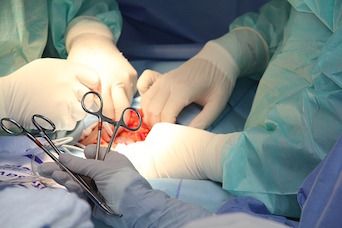Intraoperative Complications in Student-Performed Laparoscopic Ovariectomy
Study results suggest that laparoscopic OVE can be used to train veterinary students in laparoscopic techniques.

In a study published July 1 in the Journal of the American Veterinary Medical Association, researchers found low intraoperative complication rates in laparoscopic ovariectomy (OVE) performed by veterinary students. The results suggest that laparoscopic OVE can be used to train veterinary students in laparoscopic techniques, they say.
“As minimally invasive surgery becomes more common in veterinary practice, it is important to expose veterinary students to laparoscopy and laparoscopic OVE in a safe environment,” write the authors. “Before laparoscopic OVE can be recommended as a teaching model for laparoscopy, it would be important to determine the rate of complications of laparoscopic OVE performed by individuals with little to no experience in minimally invasive surgery under close supervision.”
The investigators retrospectively reviewed the records of 161 female shelter dogs that underwent laparoscopic OVE by fourth-year veterinary students at the Colorado State University Veterinary Teaching Hospital from 2010 through 2014. The students had performed at least 1 OVE or ovariohysterectomy via open laparotomy before performing the laparoscopic procedure. None had previous experience with laparoscopy. A supervising veterinarian and registered veterinary technicians were present during the procedures.
Students used a 2-cannula technique, created pneumoperitoneum with a Veress needle, and sealed the ovarian pedicles and uterine horn with a vessel-sealing device. All dogs recovered without complications and were returned to their shelters within 24 hours of the procedure.
Intraoperative complications were reported in 24 of 161 dogs. In 20 dogs, splenic puncture resulted in blood loss that was classified as minor because no treatment was needed. In 4 dogs, ovarian pedicle bleeding required an additional application of the vessel-sealing device. Two ovaries were dropped within the abdominal cavity and retrieved endoscopically. No procedures were converted to laparotomy, and the supervising veterinarian did not physically intervene in any of the procedures.
“The rate of minor intraoperative complications (14.9%) identified in the present study was no different from rates reported for board-certified veterinary surgeons with experience in laparoscopic OVE (0% to 55%),” write the authors. The students’ rate of splenic puncture (12.4%) was within the range reported for experienced surgeons using Veress needles (between 0% and 18.7%). Bleeding from the ovarian pedicle occurred at a lower rate than has been reported for OVE by laparotomy, they add.
The authors note that although laparoscopic OVE is relatively simple, laparoscopy takes time to master and students do not become proficient after performing 1 procedure. They suggest that training with simulators could facilitate the learning process and reduce the length of the operations (the mean procedure duration in this study was 114.9 ± 33.4 minutes).
Limitations discussed by the authors were the retrospective nature of the study and the lack of long-term postoperative follow-up. They note that their main objective was to determine the intraoperative complication rate, not long-term complications. They also mention that ovariohysterectomy was not performed laparoscopically because it would have required a laparoscopic-assisted approach, not a total laparoscopic approach.
“Findings of the present study suggested that laparoscopic OVE can be performed by novice veterinary surgeons with no prior training in minimally invasive surgery,” conclude the authors. “The procedure was associated with few intraoperative complications when performed by closely supervised veterinary students.”
Dr. Laurie Anne Walden received her doctorate in veterinary medicine from North Carolina State University. After an internship in small animal medicine and surgery at Auburn University, she returned to North Carolina, where she has been in small animal primary care practice for over 20 years. Dr. Walden is also a board-certified editor in the life sciences and owner of Walden Medical Writing, LLC. She works as a full-time freelance medical writer and editor and continues to see patients a few days each month.










